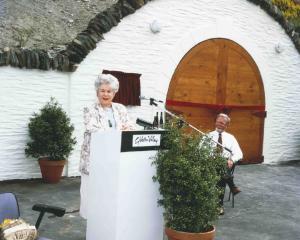Mountain beech moth caterpillars have been munching their way through a large swathe of beech forest in the Dingle Burn Valley, causing defoliation and discolouration.
Several hundred hectares had been affected by the caterpillar (Proteodes carnifex) and back-country users would notice the forest had turned grey-brown and appeared to be dying, the Department of Conservation said yesterday.
Doc Otago botanist John Barkla discovered the defoliation while monitoring a nationally endangered plant (Pittosporum patulum) in the valley.
He said it was a periodic natural event and whole tracts of subalpine South Island forests could be affected by the moth.
"We don't need to consider artificial control methods because the moth numbers will fall dramatically after the epidemic and mountain beech has a natural ability to refoliate.
"We expect the complete recovery of healthy trees because both caterpillar and host have evolved together over a long period of time," Mr Barkla said.
Trees at the upper forest limit or those weakened by old age might suffer partial crown death and, in some cases, might die.
Because defoliation allows more light to fall on the forest floor, an uncharacteristic mat of vigorous grasses and weeds could develop, which could adversely affect seedling growth.
Caterpillars of this moth were usually found only on black or mountain beech but they occasionally occurred on red and silver beech growing close to black or mountain beech, he said.
Silver beech forest at the uppermost limit of the Dingle Burn forest appears to be unaffected.












